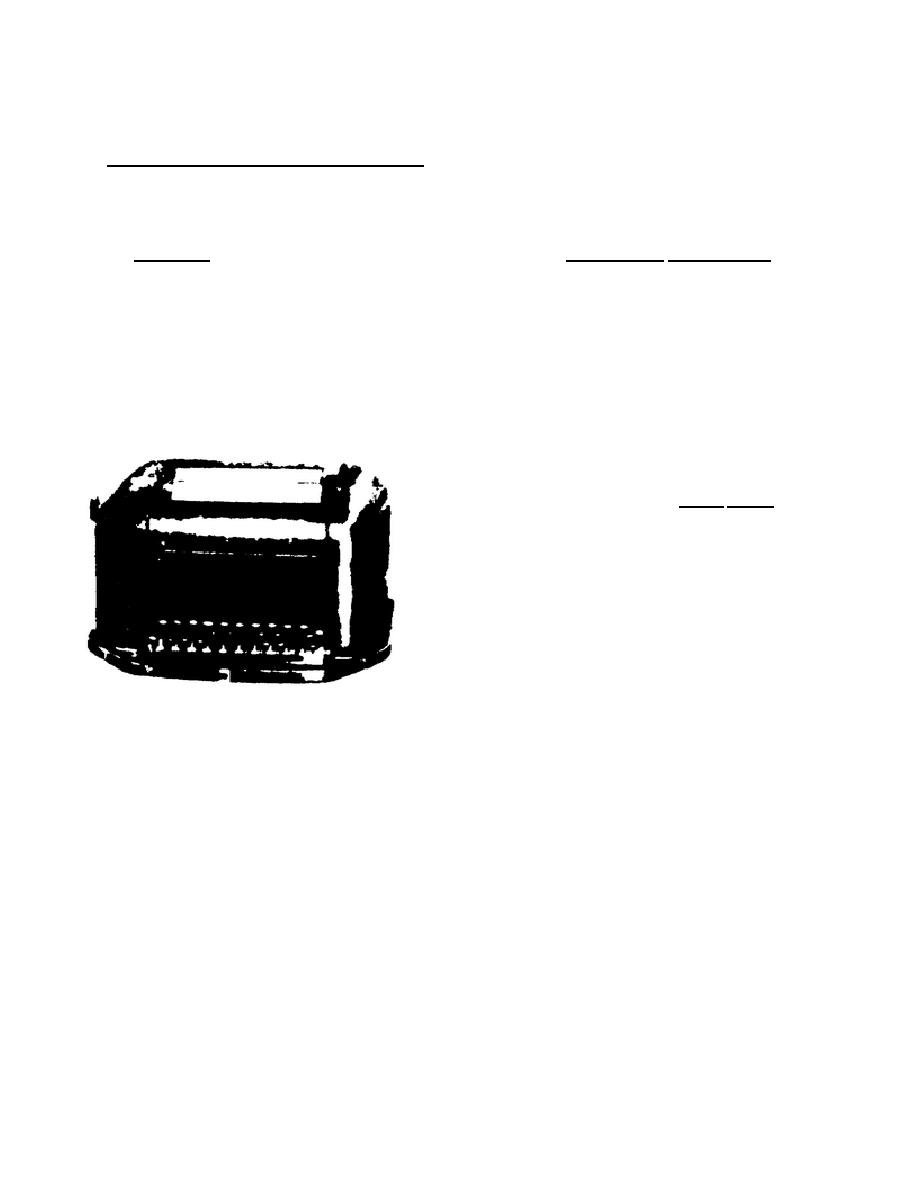
CHAPTER 9
INTRODUCTION TO TELETYPEWRITER COMMUNICATIONS
77.
Introduction to Teletypewriter Communications.
The purpose of this text is to explain some of the fundamental concepts and terms used in teletypewriter
communications.
a. Telegraphy is a system of sending and receiving coded signals. Teletypewriter communication is telegraphy
in which teletypewriters such as the one in figure 74 are used at the sending and receiving stations.
b. The block diagrams in figure 75 illustrate systems in which the teletypewriter and associated equipment can
be used to send a message from one station to another.
(1) Direct current (dc) system (A, figure 75). In a dc system, the sending teletypewriter operator types a message.
Direct current pulses are sent over a circuit to the receiving teletypewriter. The receiving teletypewriter automatically
translates the coded pulses and types out the message. The pulse code and the kinds of pulses used in dc teletypewriter
circuits are discussed in paragraphs 73 and 76 respectively.
(2) Voice-frequency carrier system (B, fig. 75).
In a typical voice-frequency system, the teletypewriter
output goes to a voice-frequency telegraph terminal
where it causes an oscillator to shift from one
predetermined frequency to another higher or lower
frequency, depending on the teletypewriter output. The
voice-frequency output of the oscillator then goes to the
FIGURE 74. Typical Teletypewriter.
receiving station. Existing telephone lines are often used to interconnect the sending and receiving stations although wire
or radio may also he used. This type of operation is used for all multichannel systems.
164



 Previous Page
Previous Page
